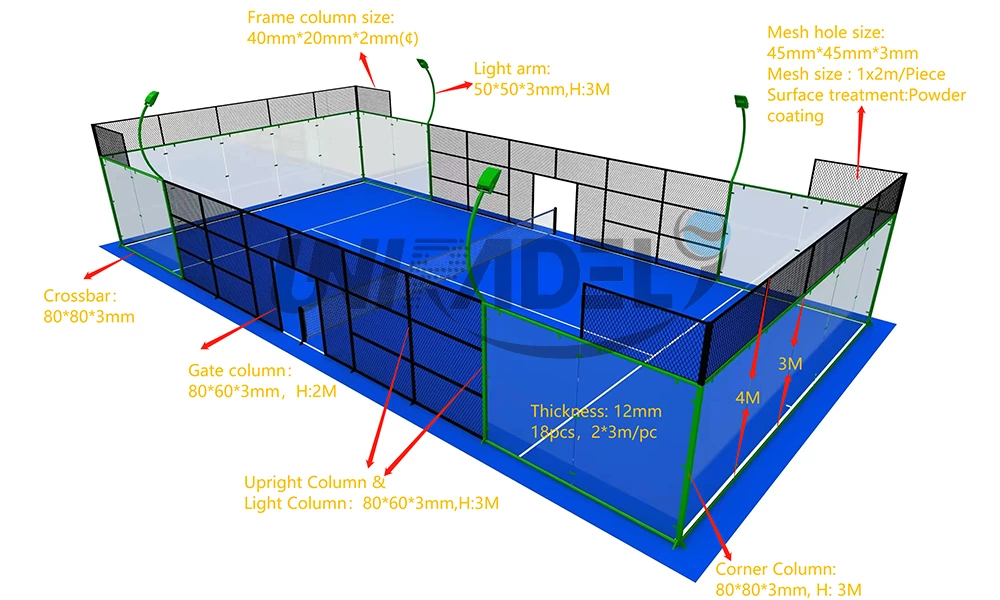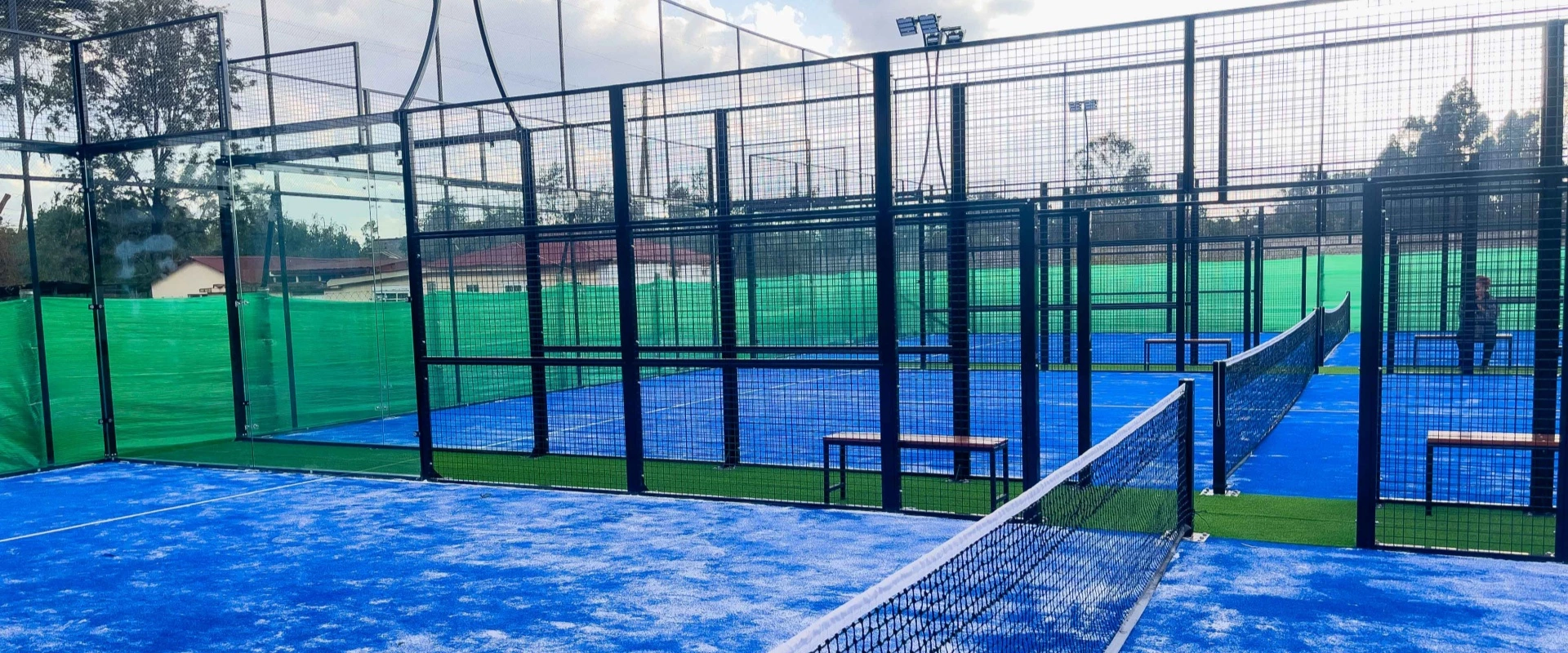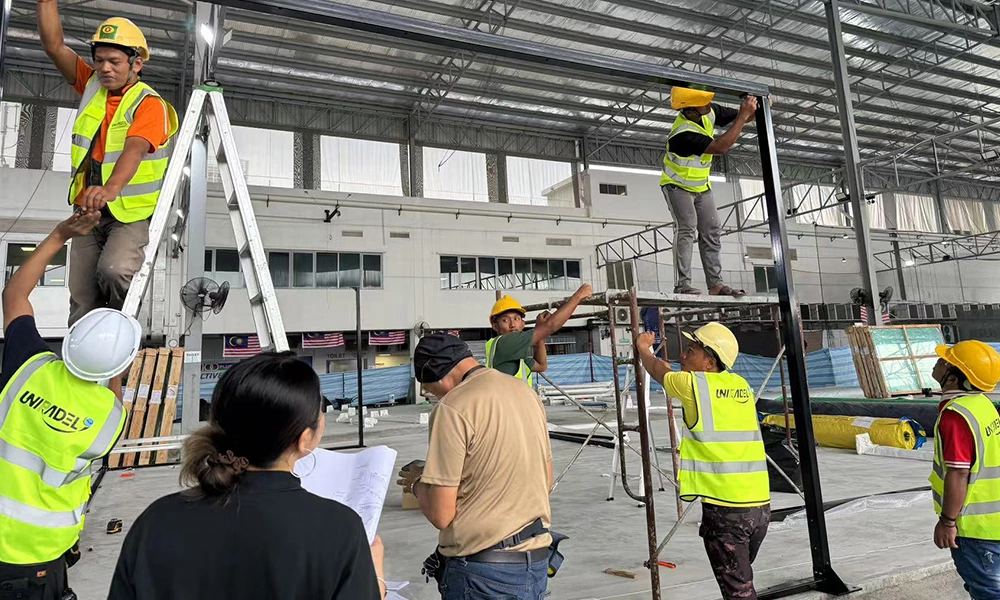All details about padel court dimensions measurements
Padel Tennis Court Size Introduction
Have you ever heard of padel tennis? This sport, which combines the essence of tennis and squash, is not only exciting, but also a great platform for teammates to work together tacitly! If you are curious about this popular sport, understanding the design details of the Padel court is a step you can't miss.
The dimensions of the Padel court are designed with ingenuity, covering the playing area, the height of the net, and the specifications of the walls. These precise data and proportions provide a solid foundation for the fairness and fun of the game.
Whether you are trying Padel for the first time, an experienced coach, or even a venue manager who is planning to build a court, this article will help you quickly master the core knowledge of the Padel court and let you have a more thorough understanding of the unique charm of this sport!
Are you ready? Let's walk into the wonderful world of Padel together!
Padel Court Material Specifications Dimensions Standard Measurement
Padel court dimensions
The standard dimensions of the padel court are length:20m. width: 10m.(Length:65ft 7in,Width:32ft 8in), single padel court dimensions are length:20m. width: 6m.
The entire court is surrounded by a metal mesh or glass fence, which is usually 3 meters high. In the back half of the court, the height of the fence can be increased to 4 meters to increase the challenge and viewing experience of the game.

Padel tennis courts are mainly divided into the following types:
Classic Padel Court
Suitable for single or double games.
Double court dimensions: 10 meters wide and 20 meters long.
Single court dimensions: 6 meters wide and 20 meters long.
Panoramic Padel Court
Double court dimensions: 10 meters wide and 20 meters long.
Single court dimensions: 6 meters wide and 20 meters long.
Covered Padel Court
Equipped with a roof, suitable for single or double games, which can block the sun or rain.
Double court dimensions: 10 meters wide and 20 meters long.
Single court dimensions: 6 meters wide and 20 meters long.
Fully covered or semi-covered Padel Court
Partially or fully covered designs are available, suitable for different weather conditions.
Double court dimensions: 10 meters wide and 20 meters long.
Single court dimensions: 6 meters wide and 20 meters long.
The above courts are designed according to international standards, and you can choose the appropriate type according to your needs to meet the requirements of different venues and events.
Padel court back wall and side walls dimensions
There is a 10 meter long and 3 meter high back wall at each end of the court.
Which is usually made of tempered glass or transparent polycarbonate material. These walls play an important rebounding role in the game. The side walls are composed of two parts, a 2-meter-long glass wall and a 2-meter-long metal mesh. The height of the side walls is 3 meters.
Center line and service area dimensions
The center line of the court is located in the middle of the court, dividing the court into two 10 meter by 10 meter halves.
The center line extends vertically to the net. Each half court is further divided into two serving areas, each measuring 4m x 5m. The serving line is 3m from the net, and the center line of the serving area divides the serving area into two areas, left and right. When serving, the ball must fall into the diagonal serving area.
Line Marking dimensions
To clearly define the playing area, all lines on the court are 5 cm wide and use bright colors to contrast with the ground, which is easy for players and referees to clearly identify during the game. The service line is designed to be 3 meters away from the back wall and parallel to the net to ensure the precise separation of the playing area. In addition, the central service line is perpendicular to the net and the service line, so that each service area is evenly distributed and the serve is accurate. To ensure the fairness of the game, all lines are made of consistent materials and coloring to avoid visibility differences affecting the penalty.
As a UNIPADEL supplier, we strictly follow the FIP (International Padel Federation) standards to ensure that our venue design meets the high standards of competition.

Padel net height and dimensions
The net divides the court horizontally into two areas of 10m x 10m. The height of the net is 0.88m to 0.92m, with the top of the net 0.92m above the ground and the bottom at 0.88m, ensuring fairness and challenge in the game.
Court boundary and safety zone dimensions
A safety area of at least 2m should be reserved around the outside of the court to prevent players from rushing out of the court during intense competition. These safety areas are usually paved with non-slip surfaces to reduce the risk of sports injuries.
The placement of white lines dimensions
The center line in the middle of the field divides the field into two parts, each of which is 10 meters long and 5 meters wide. The serving line is 3 meters away from the back line of the field and is located on the center line of each side of the field.
Regarding the placement of white lines, the line marking design of GZUNIPADEL turf also complies with the standard regulations. The serving area consists of the serving line, the side line and the center line. When serving, the players must serve in this area. The white lines of the field are usually 5 cm wide and clearly visible, which not only ensures the accuracy of the game, but also provides visual assistance to the athletes.
Padel court height limit
According to regulations, the minimum height above the court to any obstacles (such as lamps, ceilings, etc.) is set at 6 meters.
In the design of the court space, UNIPADEL strictly adheres to the clearance height requirements to ensure that the players' performance is not disturbed. We recommend that the new venue reserve a height of 8 meters to optimize the space for lobs and high-altitude strategies, make the game smoother, and ensure the integrity and professionalism of high-level competitions.
According to FIP, the court must have at least 4 floodlights around the perimeter, with a minimum height of 6 meters. The lighting must be evenly distributed, with a minimum light intensity of 200 lux outdoors and 300 lux indoors, and for professional competitions or television broadcasts, the lighting standard must be doubled.

What are the dimensions of the space around the padel court?
Back space (outside the short side of the court):
It is recommended to reserve at least 3 meters.
It is used for the range of players' activities and the placement of stands, billboards, etc.
Side space (outside the long side of the court):
It is recommended to reserve at least 2-3 meters.
It is convenient for spectators to watch or athletes to move around, and ensure that it does not affect the court fence.
Height space (ceiling or top structure height):
Indoor venues must ensure that the net height is not less than 6 meters, and the ideal height is 8-10 meters to meet the needs of high ball hitting.
The area around the padel court is a key factor in providing a professional game experience. The following are the key points to consider around the court design:
Clear boundary lines:
The court should have clearly visible boundary lines to ensure fair competition and prevent players from being tripped or injured by obstacles.
Safety first:
There should be enough buffer areas around the court to prevent players from colliding or accidentally injured. In addition, it is necessary to ensure that there are no potentially dangerous objects or obstacles around.
Spectator area:
Design a dedicated spectator viewing area around the venue to provide a comfortable viewing environment and avoid affecting the players' playing space.
Maintenance convenience:
Appropriate space should be reserved around the court surface to facilitate cleaning, repair or replacement of the court surface and surrounding facilities.
Equipment storage:
Reasonably plan the equipment storage area and store spare balls, rackets and other items safely outside the competition area to avoid interfering with the progress of the game.
Venue and environment coordination: When choosing the location of the court, ensure that it is compatible with the surrounding environment and meets the relevant regulatory requirements.
What are the space dimensions between padel courts?
When designing multiple padel courts, it is necessary to ensure that there is enough distance between the courts to facilitate the safe movement of athletes and the circulation of spectators:
Distance between adjacent courts:
It is recommended to reserve 3-4 meters, including the passage area and billboards or rest areas.
There are stands between adjacent courts:
The area occupied by stands or other fixed facilities needs to be increased in width, usually 5-6 meters is more appropriate.
The distance between courts is also crucial and cannot be ignored to ensure the quality of the game and the safety of players:
Adequate buffer distance:
Reasonable spacing allows players to move freely without being distracted or restricted by being close to other games.
Adhere to standard dimensions:
The spacing between courts should meet official recommendations to ensure that all games can proceed smoothly and provide a fair playing field for players.
Reduce the risk of injury: Adequate spacing can help reduce accidents caused by crowding and improve the overall game experience.
What are the dimensions of an outdoor roofed padel court? How do you build it?
Court dimensions
The standard dimensions of a roofed padel court are 10 meters wide and 20 meters long, with a ridge height of 8 meters, ensuring that international regulations are met.
Foundation preparation
The foundation around the court is thoroughly cleaned, beam formwork is installed, and reinforcement is assembled to strengthen the structure. Pre-set anchor pipes are placed in the foundation, which are marked and fixed at fixed intervals to connect the main pillars of the padel court. For roofed courts, the foundation is filled with gravel to ensure stability and drainage.
Ground construction
On the gravel base, C25 or C30 concrete is poured and a flat surface is created through a sloping design. On the concrete floor, when laying artificial turf, a double layer of polyurethane tape is placed along the joints to enhance the adhesion and durability of the turf. This laying method provides excellent softness, and the turf is rot-resistant, mildew-resistant and has good drainage properties, which can significantly increase the service life of the court.
Structural installation
Once the ground construction is completed, the corner posts and intermediate posts are installed using a modular bolt system. The back and side walls of the field are made of 10-12 mm thick tempered glass panels to ensure structural stability and provide excellent visual effects. The roof part is designed according to standards and uses durable materials to cover the entire field area.
Lighting system
Lighting poles are installed at the four corners of the field, each equipped with two high-efficiency LED projectors to provide uniform lighting effects. These lamps are designed to be safe and energy-saving, ensuring that the field can be used normally at night. The layout of the floodlights has been carefully designed to meet energy efficiency requirements and provide high-quality light sources for night games.




